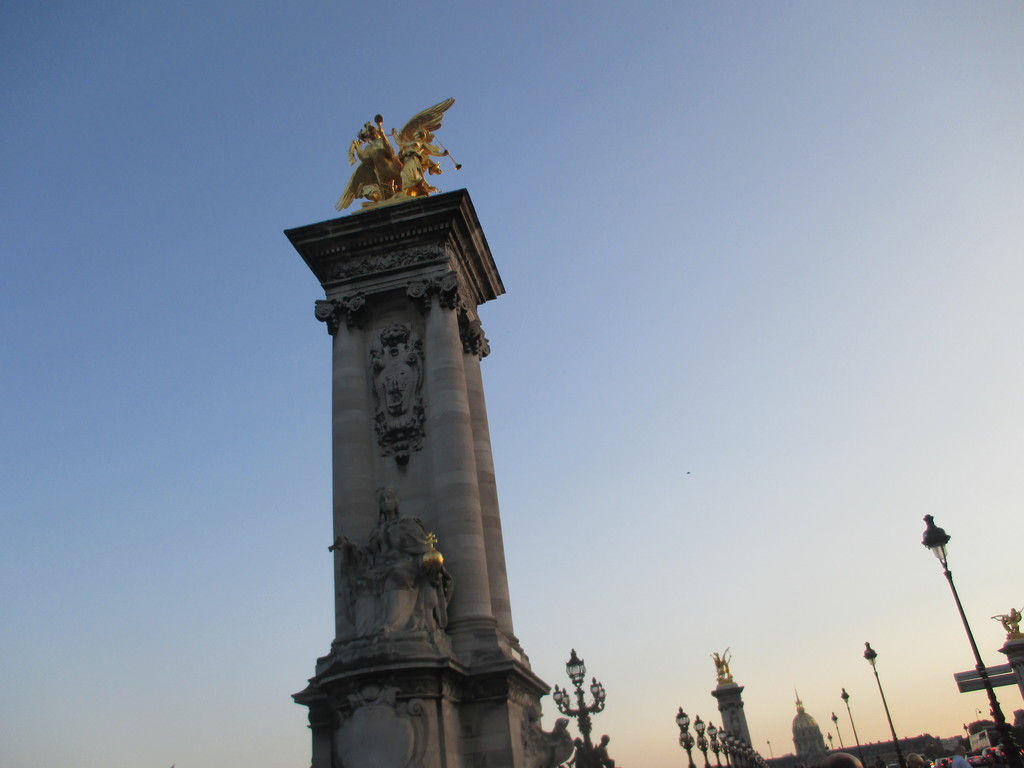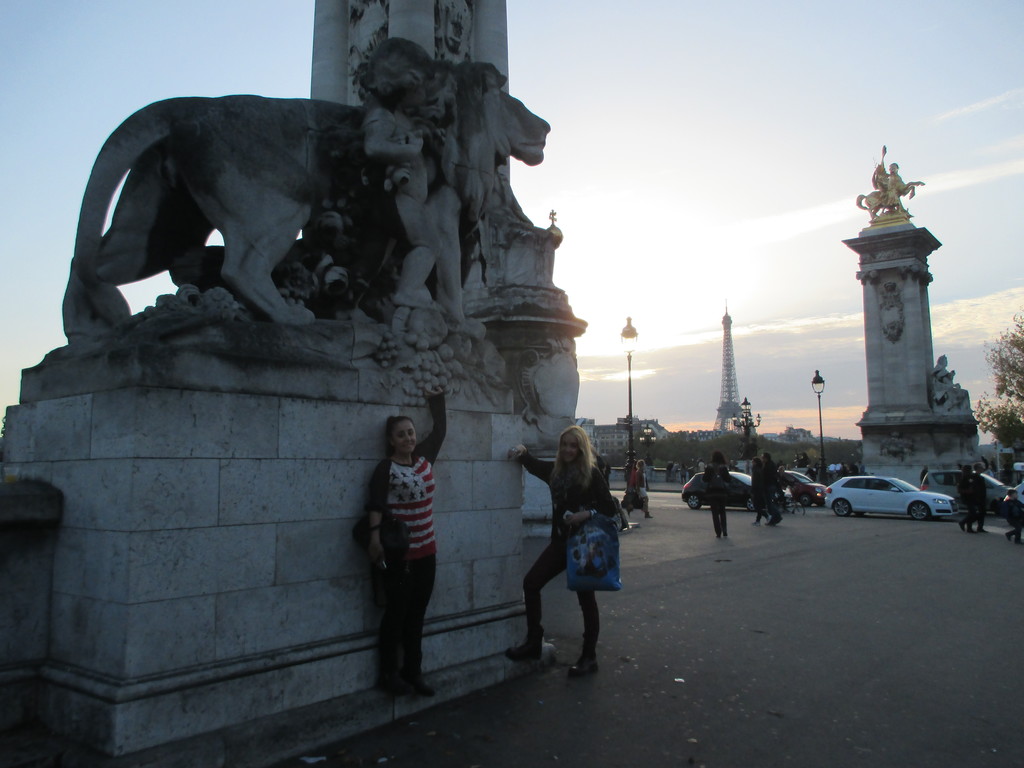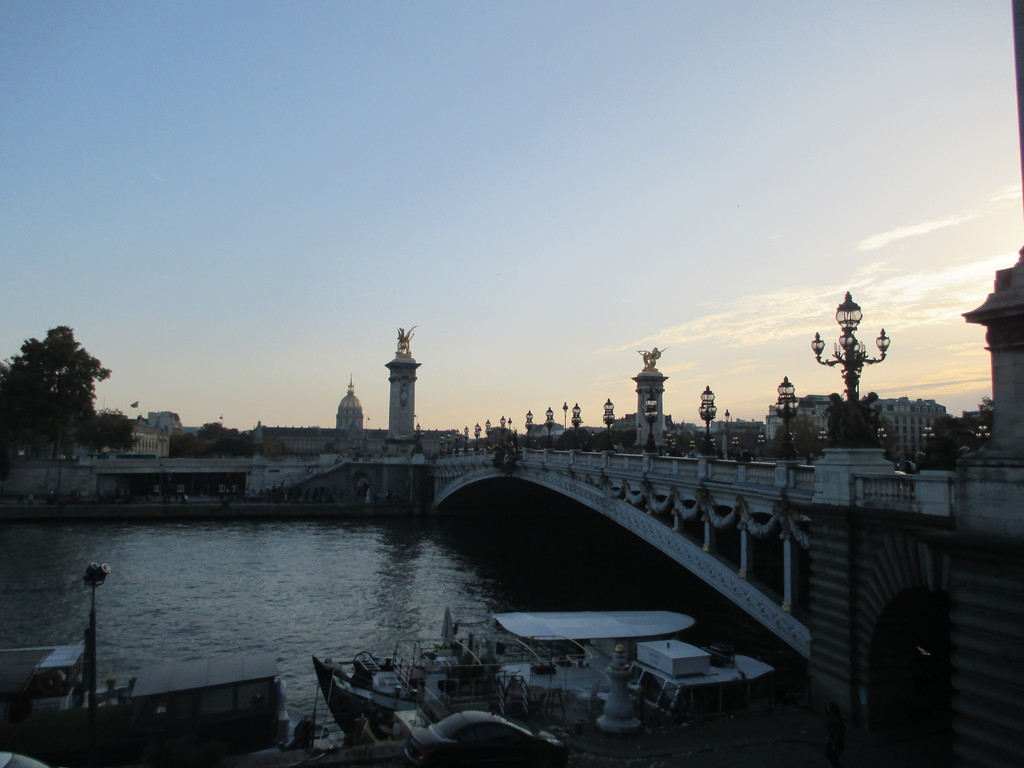Pont Alexandre III

Pont Alexander III is the most elegant bridge on the River Seine, and many consider it to be the most extravagant in Paris. Designed by a multitude of artists and decorated with ornate elements, this historical monument was constructed for the 1900 Universal Exposition in the French capital.
Pont Alexander III was built by French engineer Amédée d'Alby and the renowned Louis Jean Resal, who also helped to design Port Mirabeau and the Pont de Bercy bridge in Paris. However, it was in fact the architects José Cassein-Bernard and Gastón Cousin who came up with the initial designs for this particular bridge.
The bridge was an important work of engineering, since it doesn't consist of a sole hollow arch, but was instead required to be a low bridge so as not to obstruct the views from Les Invalides to the Avenue des Champs-Élysées.
Work began on Pont Alexandre III in 1896, and the first stone was laid by Tsar Nicholas II, the son of Tsar Alexander III who had signed the Franco-Russian alliance in 1892, in October of the same year. The bridge is dedicated to the signing of this alliance.

Although the bridge's construction only took two years to complete, some of the additional ornamental elements took longer to install. The Pont Alexandre III was therefore officially opened in 1900 at the Universal Exposition in Paris.
Let's talk about the bridge itself. We've already mentioned how the Pont d'Iena is a low bridge with just one arch, supported at either end by 17 metre high pillars, acting as counterweights in order to keep the bridge stable.
These bland columns were later crowned with four golden statues of Fame restraining Pegasus. On the right bank or north side of the river is the Grand Palais, and the Renommée des Sciences ('Fame of the Sciences') and the Renommée des Arts ('Fame of the Arts') can be seen here, both designed by Emmanuel Frémiet. At their bases are La France Contemporaine ('Contemporary France') by Gustave Michel and France de Charlemagne ('France of Charlemagne') by Alfred Lenoir.
On the left bank of the Seine, the location of the fabulous Les Invalides complex, you will see the other two golden equestrian statues or Fames of Pegasus, the first known as the Renommee du Commerce ('Fame of Commerce') and sculpted by P. Grant, and the Renommee de l'Industrie ('Fame of Industry'), produced by C. Steiner.
At the base of each of these two columns stand two smaller statues. The first is known as La Francia Rennaissante, designed by Jules Coutan, and the second as the La France de Louis XIV, by Laurent Marqueste.
There are also two statues of lions designed by the French sculptors Jules Dalou and Georges Gardet.
On each side of the Pont Alexandre III at the centre of the curved arch, there is an angular stone, which on one side shows a hammered copper sculpture of the Nymphs of Neva displaying the arms of Imperial Russia. On the opposite side sits a sculpture of the Nymphs of the Seine, showing the arms of France. Both sculptures were produced by Georges Recipon, who also worked on the construction of the Grand Palais, in preparation for the 1900 World Fair in Paris.
The bridge also features four monumental candelabra, surrounded by cupids and ocean monsters and sculpted by H. Gauquic.
The Pont Alexandre III is undoubtedly one of the most fabulous tourist attractions in Paris. The photos posted here do not compare with seeing it in person.
Considered a Parisian historical monument, Pont Alexandre III can be found in district 8 on the right bank of the River Seine, and in district 7 on the left bank.

On the right bank sit the Grand Palais and the Petit Palais, next to the Avenue des Champs-Élysées. The closest metro station to here is Champs-Élysées. The closest station on the left bank is Invalides, with lines 8 and 13 running through it, also a stop for RER trains on line C. As you can probably guess from its name, this is the side of the river where the Hotel Les Invalides with its multitude of museums and Napoleon's tomb are located.
There are, of course, other forms of transport in Paris which stop near to Pont Alexandre III, including buses. There are also public bike stations (vélib) nearby, and tourist buses such as the Les Rouges cars and lÒpenTour also pass by the bridge on their routes.

Photo gallery
Content available in other languages
- Español: Pont Alexandre III
- Polski: Pont Alexandre III
Rate and comment about this place!
Do you know Pont Alexandre III? Share your opinion about this place.



















